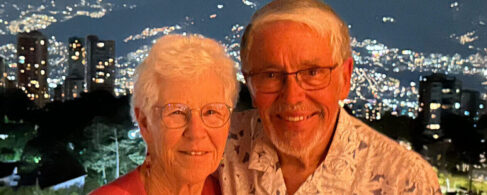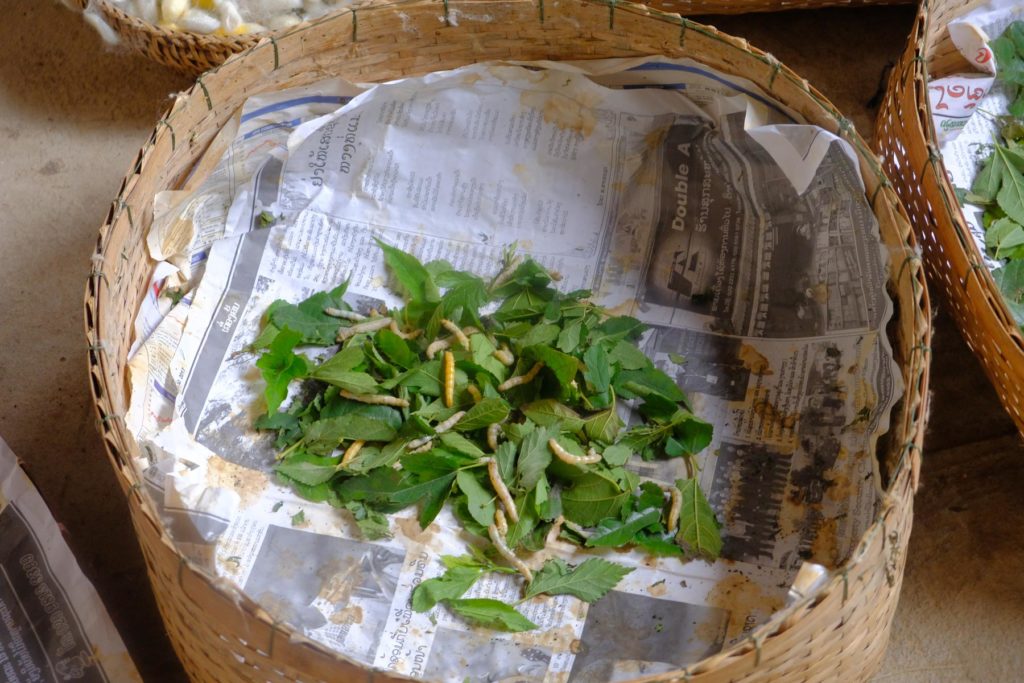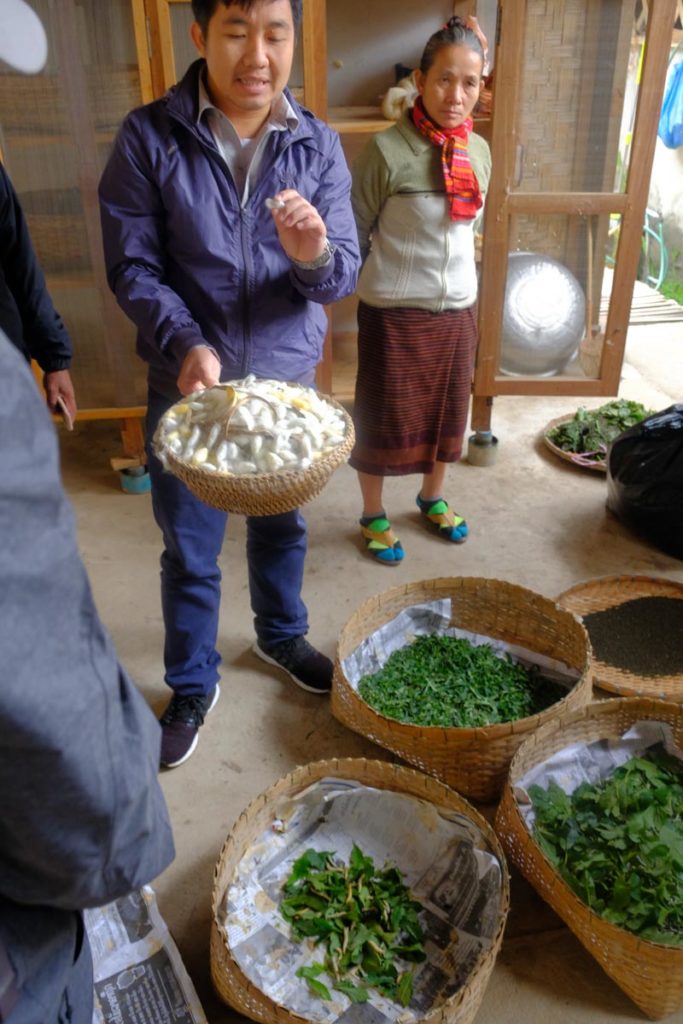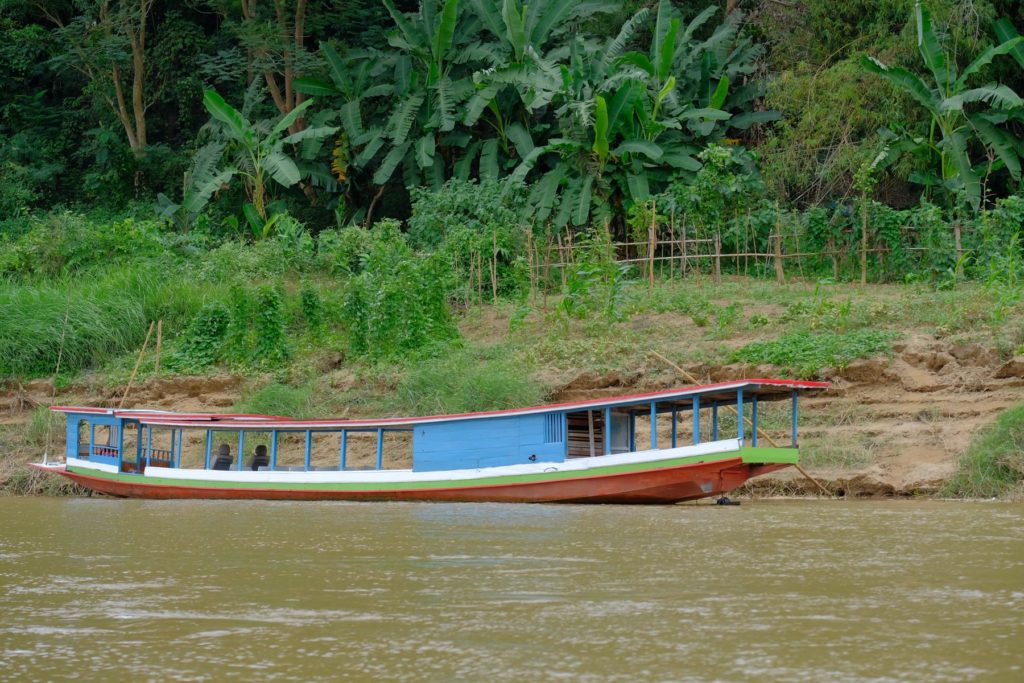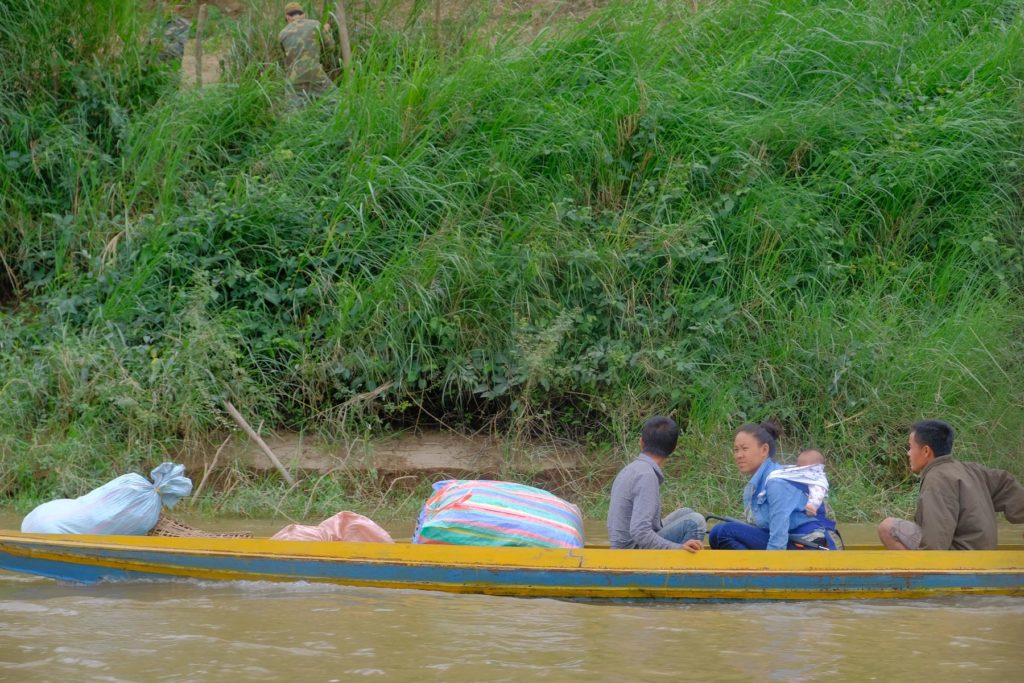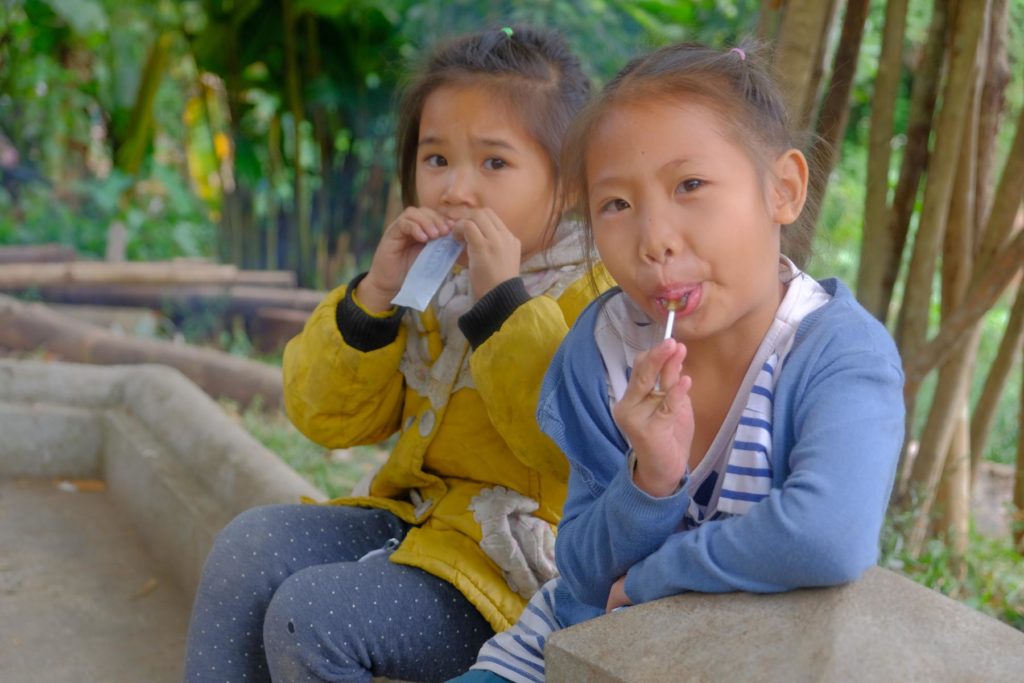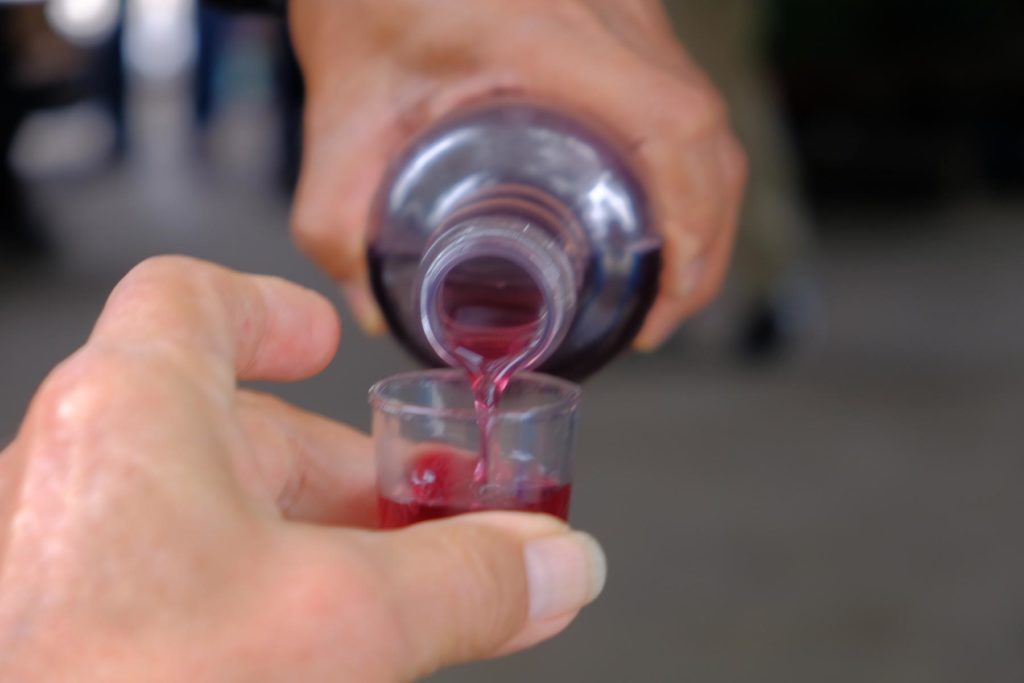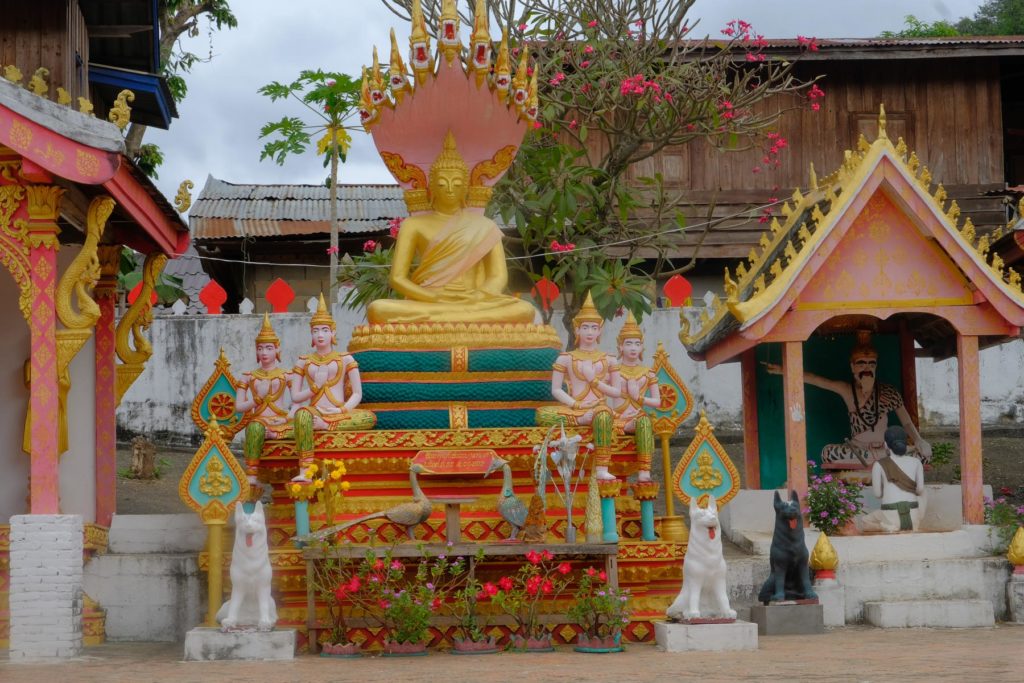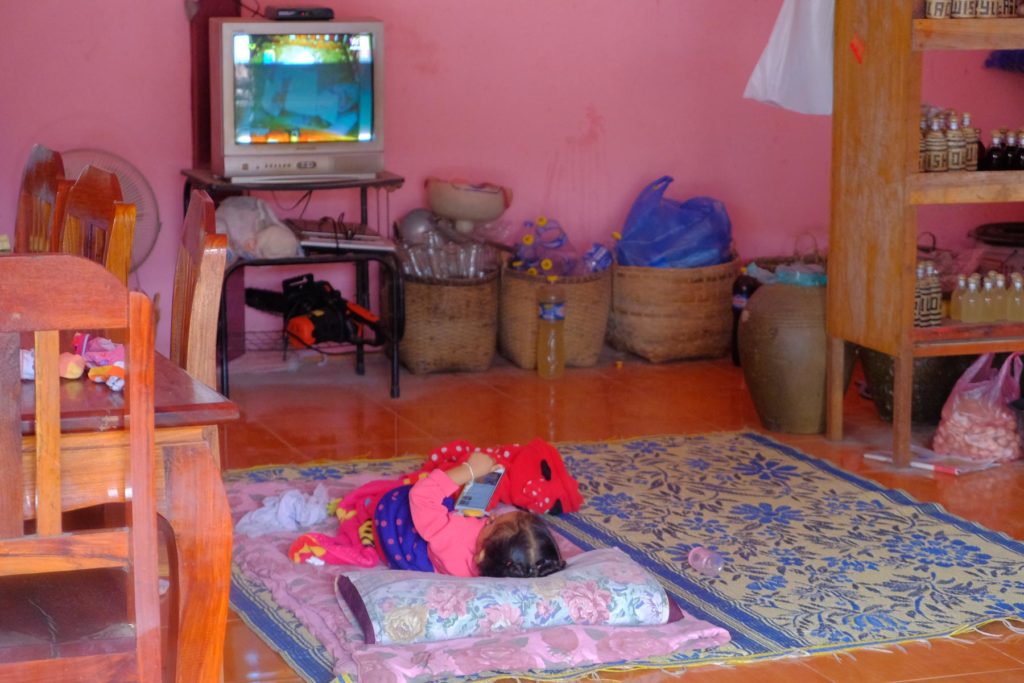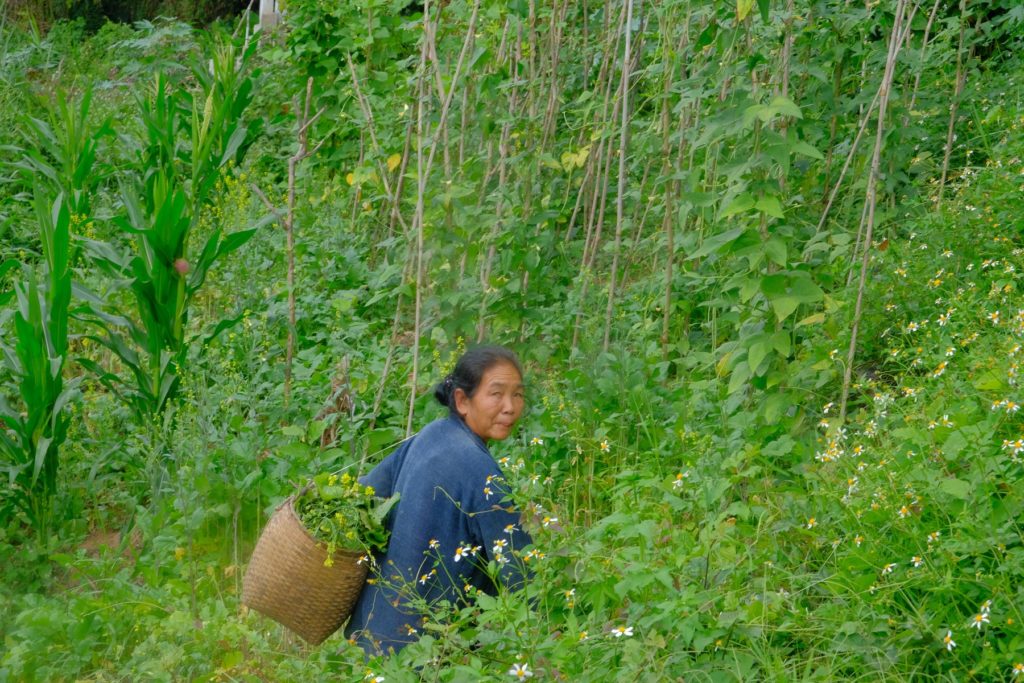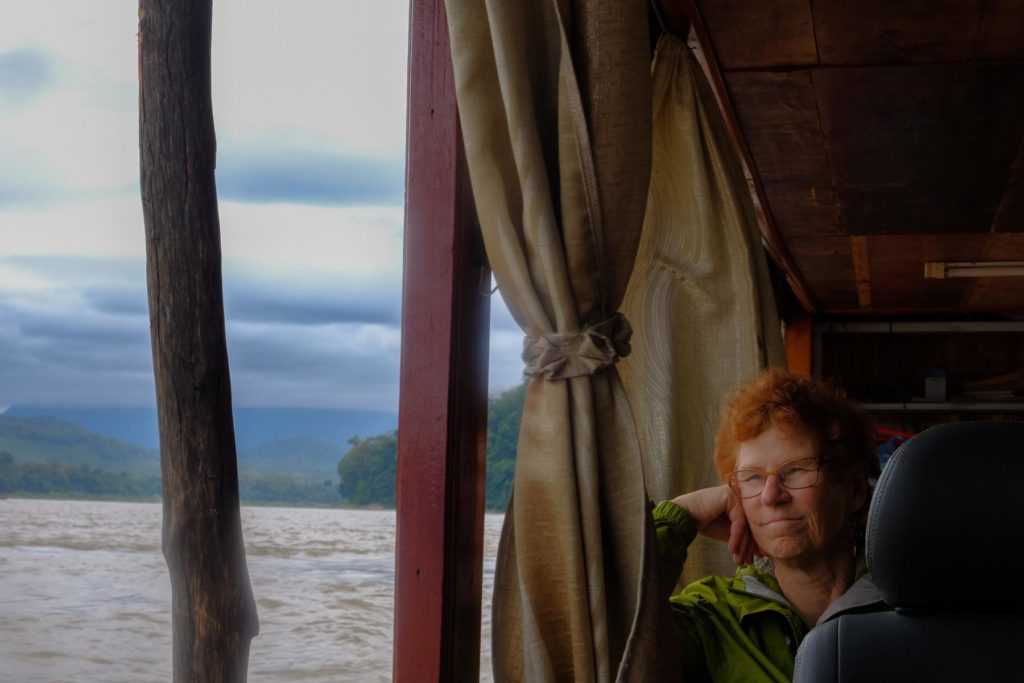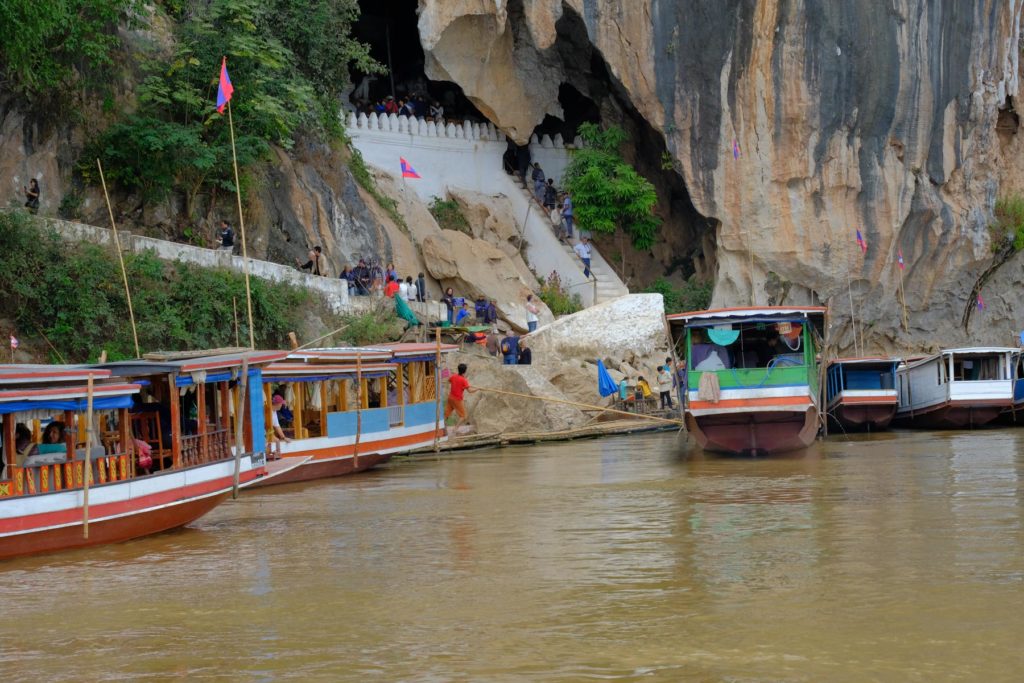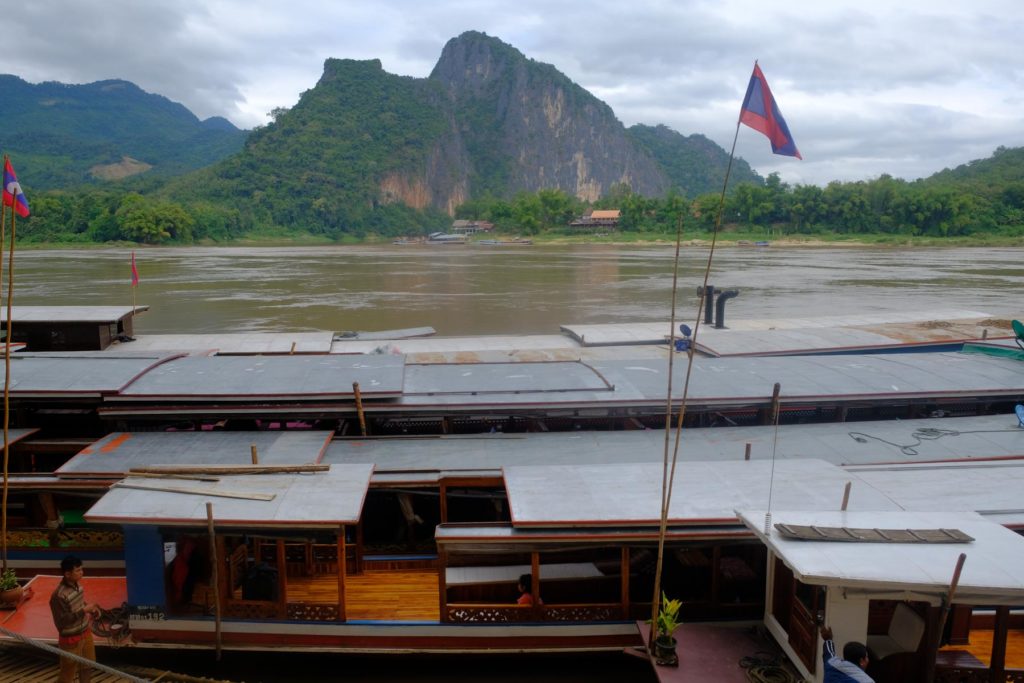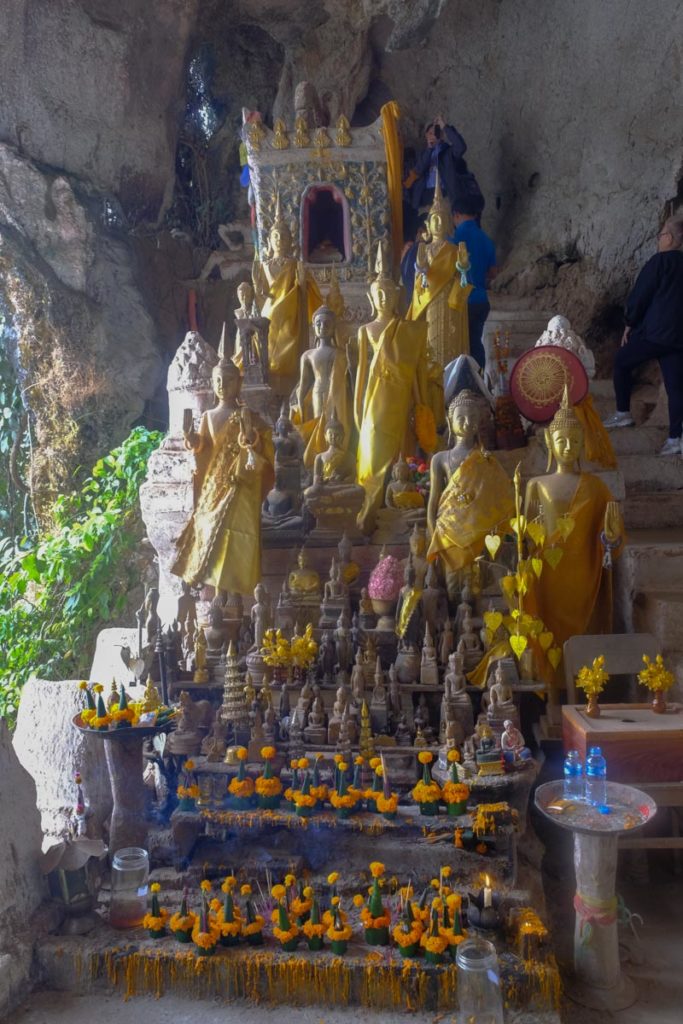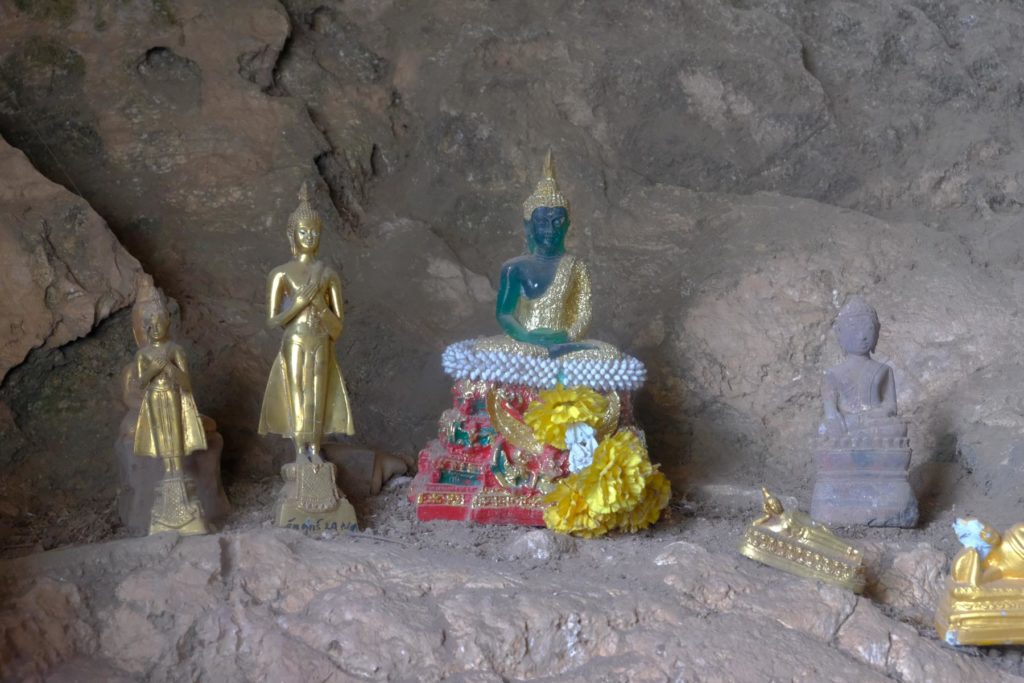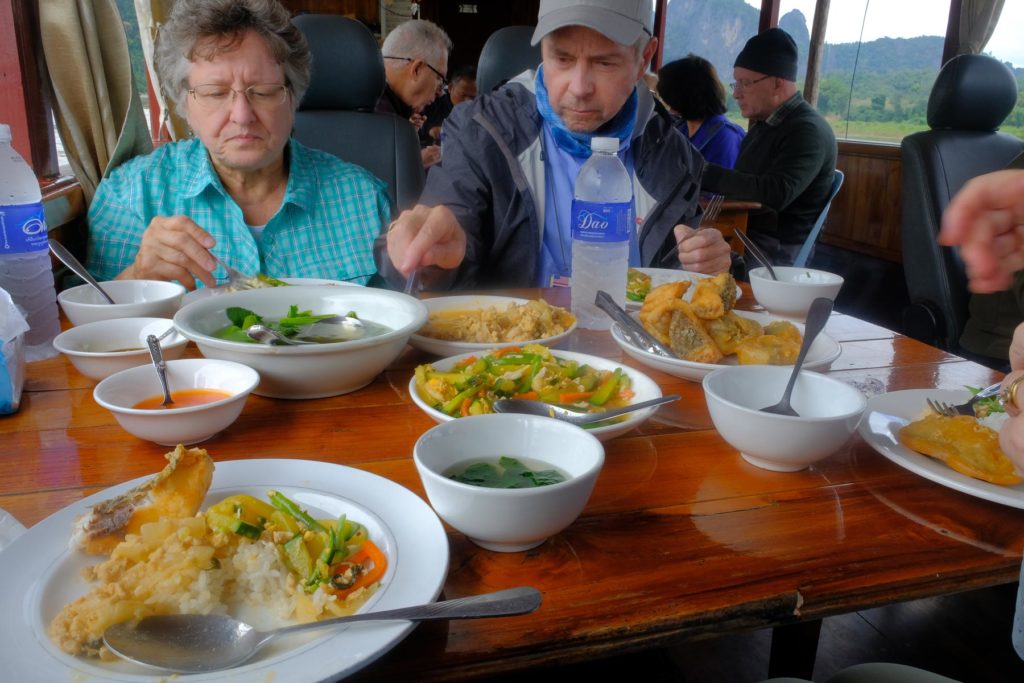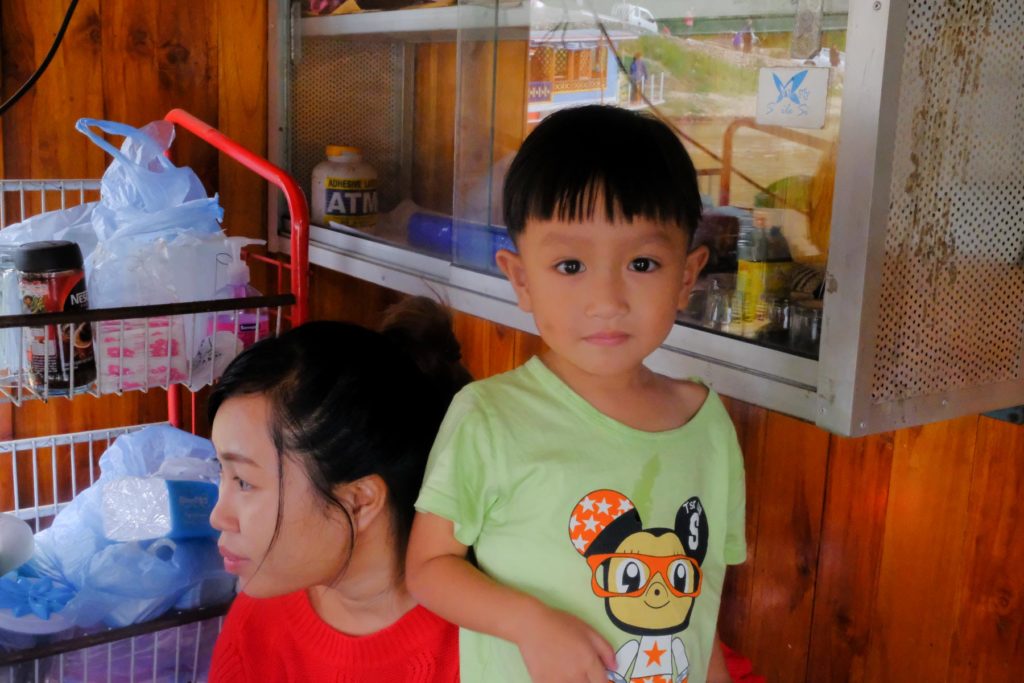Today was largely a tourist’s day, seeing sights and visiting local craft businesses as we went.
First, a stop at an operation that makes paper from bamboo fibers and weaves silk from home-raised caterpillar cocoons. The water-borne fiber is spread on a frame roughly one-meter square; leaves and flowers are placed on the fibers in a pleasing pattern and the finished frame is set out to dry. We bought some nice note cards made from the material.
The silk process starts by feeding young caterpillars for about six weeks until they mature, turn yellow and stop eating. They immediately mate, spin their webs, deposit eggs and die. The silk people shake the baby worms out of the cocoon and unravel it to produce a strand of up to 10 meters in length. The strands are spun into threads and the threads woven into cloth. Local berries are used to color the thread. The hatched caterpillars hit the mulberry leaves and the process repeats. We bought a nice table runner.
From the paper/linen shop we walk a short distance and down a steep hill to a waiting boat, long and narrow, naturally, but not really a sampan I’d say. Up the Mekong River we sailed, heading generally north and west toward the Myanmar, Thailand, Laos border – the Golden Triangle, home to some of the world’s most prolific producers of opium. We didn’t go that far but even further on we would have reached the border with China. Sailing the other direction we would have reached Vietnam where the Mekong Delta divides the river into nine main branches before emptying into the South China Sea, excuse me, the East Vietnam Sea. Whatever. In total the Mekong runs some 2,700 miles from start to finish.
Along the way we made two stops. First at a whiskey and wine distillery in Ban Xang Hai village. Now I know you, like me, are thinking, “How come Buddhists are producing booze. I thought one of Buddhism’s five commandments is Thou Shall Drink No Booze?” I asked both Toui and Jack this question. They both laughed. “Buddhism teaches what ought to be done but it’s up to the individual to make the choice.” In fact there is a fairly extensive Buddhist temple complex immediately behind the distillery.
Sticky rice is the base ingredient. We sampled red wine, white wine and rice whiskey, which I guess is a close cousin to Japanese sake. Judy, who hates red wine, preferred the grape juice flavored red wine compared to the white, just to give you a hint as to how they taste.
The other stop was at the PaK Ou cave. Filled with thousands of Buddhist icons, it is thought to date back for hundreds of years. It was officially discovered in the 16th Century by King Setthathirat although it had been in use for some time prior. Followers of the Buddha bring small statues and icons of the Buddha and place them in the caves (there are two), place flowers and light incense. The caves are set in sheer limestone cliff rising from the water. We parked our boat along with a dozen others and climbed maybe 50 feet up steep stairs to reach the caves and spent about one-half hour there.
The boat owner’s wife cooked us up a nice Lao lunch of kale soup, deep-fried fish (what kind? Don’t know. Didn’t ask), a mild curry chicken, sautéed veggies and a banana for desert.
So six hours total, up and back, interesting visits at three locations, not a bad way to spend the morning?
But for me the interesting outcome of this trip was a presentation by Toui, our Lao guide, of Laos’ strategic plan. You see, Laotians have been asking themselves, “Why are we at the bottom of the economic totem pole, lumped with Myanmar and Cambodia? Why can’t we be big and strong like Thailand? Even Vietnam is ahead of us.”
Some background: Laos has five neighbors: Thailand, Cambodia, Vietnam, Myanmar and China. All have ocean access; Laos is landlocked. Laos is a Communist country but like most other Communist countries it is a CapCom state – Communist rule with a Capitalist economy. A long stretch of the Mekong river flows through Laos, however, and that’s the key to their plan: Become the Battery of Southeast Asia. So far they have built 43 hydroelectric projects on 17 rivers that flow within Laos. A plant on the Mekong will come on line next year. An additional 52 are planned to reach the strategic goal of 100 before too long.
Funding for these projects come from Thailand and China. The deals call for Laos to deliver 95% of power generated to the funding nation for 30 years. Laos retains 15% of revenues; when the 30-year period is up all electricity belongs to Laos. Everyone needs electricity. Laos has rivers to spare. What’s not to like?
There are a few details. These dams have displaced 6,000 citizens to new prefab towns complete with water, sewer, electricity, schools and health clinics. But that doesn’t work well for farm families who find themselves living in areas where land prices make farming infeasible. And centuries-old cultures and ways of life are disrupted. The government is to pay the resettled a stipend. But the cash has yet to flow. When, if ever, will it?
The Mekong is an important resource for fishing. The silt it carries during the rainy season is important for riverside farming. No problem: new free-flow dam technology eliminates the need for a reservoir behind the generators and permits free flow of fish and silt through the dam.
By eliminating the dam they solve the problem of river level management. Dams on the Mekong in China already affect the river level in Laos. China retains water in the dry season and dumps it in the rainy season.
The other Mekong River countries are planning their own hydro projects. A multi-country commission has been established to try and regulate the members’ hydro activities.
Toui’s mother happens to be a life-long Communist Party member and holds a fairly high position in the government. She is aware of the details behind the dam project. Toui (who favors a move to democracy even though it’s not something that will happen soon) challenged her. “The displaced people are not being treated fairly. Despite the Party line, I know that the government is not living up to its promises to these people and that they are suffering from the dam projects.” His mother is deeply committed to the Party and firmly believes that what it is doing is correct. “Toui, you need to concentrate on what you need to know and not on everything that there is to know.” In other words, keep your mouth shut. People have “disappeared” for voicing viewpoint contrary to the Party.
Toui’s mom had hoped her son would have become a policeman. He’s a tourist guide with one kid of his own and a 14-year-old novice monk whom Toui and his wife adopted.
But, hey, they have a plan. They’ve identified a market that needs its product, has identified resources under their control to meet that market demand and have demonstrated their ability to deliver on the plan, albeit with a few bumps, hiccups and hardships here and there. I wonder how this plan would be received on Shark Tank?
We were back at the Sada Hotel by 2:30. Judy and a bunch of the others went for a massage treatment for which Luang Prabang is known. I stayed home to nurse a head cold that’s been bugging me. I’m skipping the dinner too in the interest of rapid recovery.
